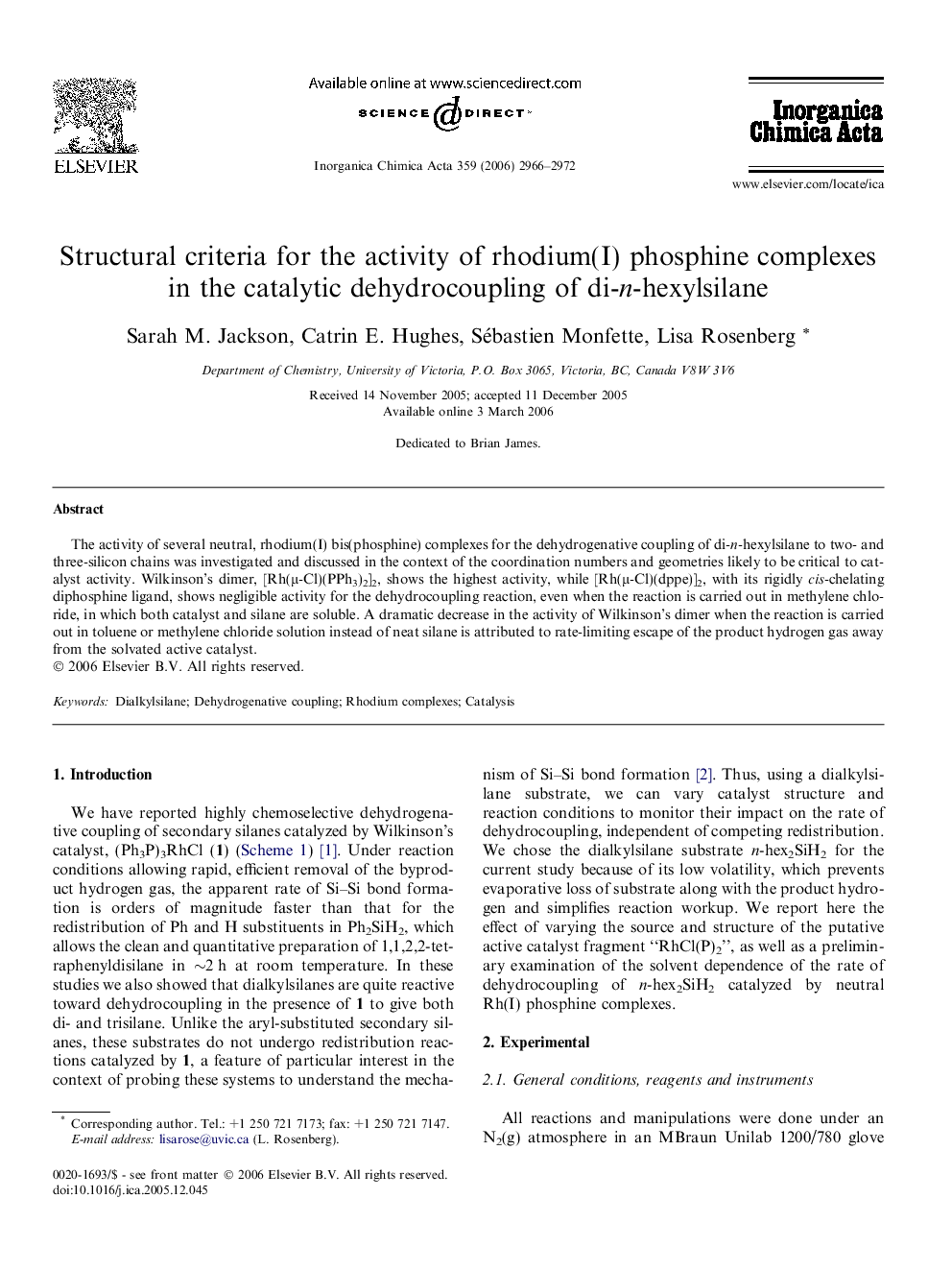| کد مقاله | کد نشریه | سال انتشار | مقاله انگلیسی | نسخه تمام متن |
|---|---|---|---|---|
| 1313038 | 975522 | 2006 | 7 صفحه PDF | دانلود رایگان |

The activity of several neutral, rhodium(I) bis(phosphine) complexes for the dehydrogenative coupling of di-n-hexylsilane to two- and three-silicon chains was investigated and discussed in the context of the coordination numbers and geometries likely to be critical to catalyst activity. Wilkinson’s dimer, [Rh(μ-Cl)(PPh3)2]2, shows the highest activity, while [Rh(μ-Cl)(dppe)]2, with its rigidly cis-chelating diphosphine ligand, shows negligible activity for the dehydrocoupling reaction, even when the reaction is carried out in methylene chloride, in which both catalyst and silane are soluble. A dramatic decrease in the activity of Wilkinson’s dimer when the reaction is carried out in toluene or methylene chloride solution instead of neat silane is attributed to rate-limiting escape of the product hydrogen gas away from the solvated active catalyst.
The activity of the rhodium complexes [RhCl(PPh3)3], [Rh2(μ-Cl)2(PPh3)4], [Rh2(μ-Cl)2(dppe)] and [Rh2(μ-Cl)2(dppb)] for catalytic dehydrogenative oligomerization of di-n-hexylsilane was investigated and discussed in the context of the coordination numbers and geometries likely to be critical to catalyst activity.Figure optionsDownload as PowerPoint slide
Journal: Inorganica Chimica Acta - Volume 359, Issue 9, 1 June 2006, Pages 2966–2972